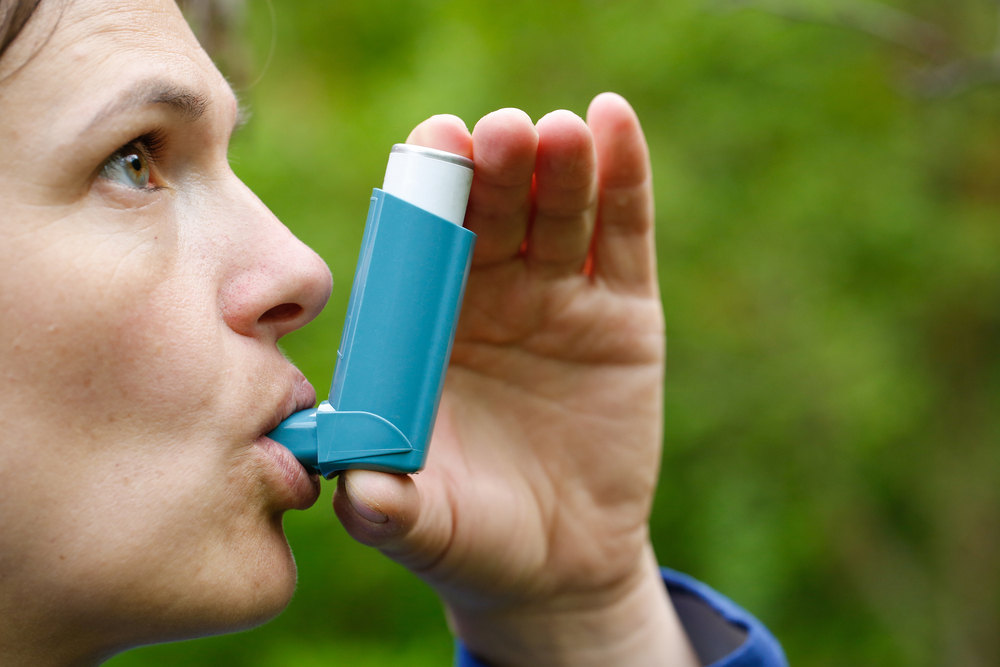Patients Make Common Mistakes Using Inhalers, Limiting Medication’s Effectiveness
Written by |

Metered-dose inhalers are a common device among patients with lung diseases, including chronic obstructive pulmonary disease (COPD), but users may be doing it wrong and limiting the medication’s effectiveness by getting only half the medication they need, according to two studies from Rice University.
One study, “Factors Determining In Vitro Lung Deposition Of Albuterol Aerosol Delivered By Ventolin Metered-Dose Inhaler,” was published in the Journal of Aerosol Medicine and Pulmonary Drug Delivery. The other, “Measuring Competence In Metered Dose Inhaler Use Using Capmedic Electronic Inhaler Monitoring Tool,” was published in the journal Chest.
The studies resulted from a collaboration between Rice research teams led by Ashutosh Sabharwal, a professor of electrical and computer engineering, and pulmonologist Nick Hanania. The teams sought to identify common errors associated with metered-dose inhalers and how they change the amount of medicine reaching patients’ lungs.
“Metered-dose inhalers are used every day by people with asthma, COPD and other chronic lung diseases, and the vast majority of the time — between 70 and 90 percent — patients make mistakes that keep some of the medicine from making it to their lungs,” Sabharwal said in a news release. “While inhalers are the most efficient delivery mechanism for many patients, these devices require deft maneuvers on the part of patients. The common errors are well-known, but fixing them continues to be a challenge.”
Hanania said clinicians have know for years that many patients don’t use their inhalers correctly.
“In the best case, a puff from an inhaler results in about 40 percent of the medicine reaching the lungs,” he said. “In the worst case, if someone does everything wrong, that drops to 7 percent. We know the two extremes, but the vast majority of everyday use falls somewhere in the middle. In this study, we have been able to objectively measure the errors, and, using new technology, learn about their impact on drug delivery to the lungs.”
Researchers assessed how patients used the inhalers, then built mathematical models of inhalation patterns. They reviewed how physicians and therapists evaluate inhaler use, and also created an artificial “throat” to mimic how patients use inhalers.
The use of an inhaler requires precision, timing and coordination, and even the tiniest variation can significantly change the amount of medication inhaled.
In the second study, which involved 23 patients with asthma or COPD, researchers identified at least one mistake in each patient. According to researchers, inhalers should be shaken for a few seconds before each puff, which is something many patients forget to do.
Also, the angle at which the inhaler is held influences its use, as small deviations may cause the medication to stick to the tongue or mouth. After each puff, patients need to hold their breath for 10 seconds to let the medication travel to their lungs.
The artificial “throat” helped simulate the flow, duration and force used during different behaviors of inhalation. Using this machine, researchers were able to measure how much medicine made it to the lungs according to the different scenarios in which patients make common mistakes.
“The thing that matters the most is coordination,” said Rajoshi Biswas, author of the two studies. “It’s vital to start breathing just before or at the exact same time the inhaler is activated. A delay of just a half second between pressing the inhaler and breathing in was enough to limit lung deposition to about 20 percent — about half of what a patient would get in the ideal case.”
For instance, when the machine inhaled before the inhaler was activated, only 35 percent of the medication reached the lungs.
“In this situation, where timing is coordinated, the determining factor for lung deposition is the flow rate,” Biswas said. “Based on our findings, the ideal scenario is to inhale deeply at higher flow rates for about three seconds to fully inhale, and to activate the inhaler about a half second after starting to inhale. This helps ensure the medication clears the mouth-throat cavity and reaches the lungs.”
Of note, the results found in these studies do not agree with the current Global Initiative for Asthma Inhaler Use Guidelines.
“The propellant used in inhalers has changed in recent years, and the current guidelines were developed based on studies of the old inhalers,” Biswas said. “Our findings, coupled with the recent changes in inhaler propellants, suggest it is time to revisit these guidelines.”




